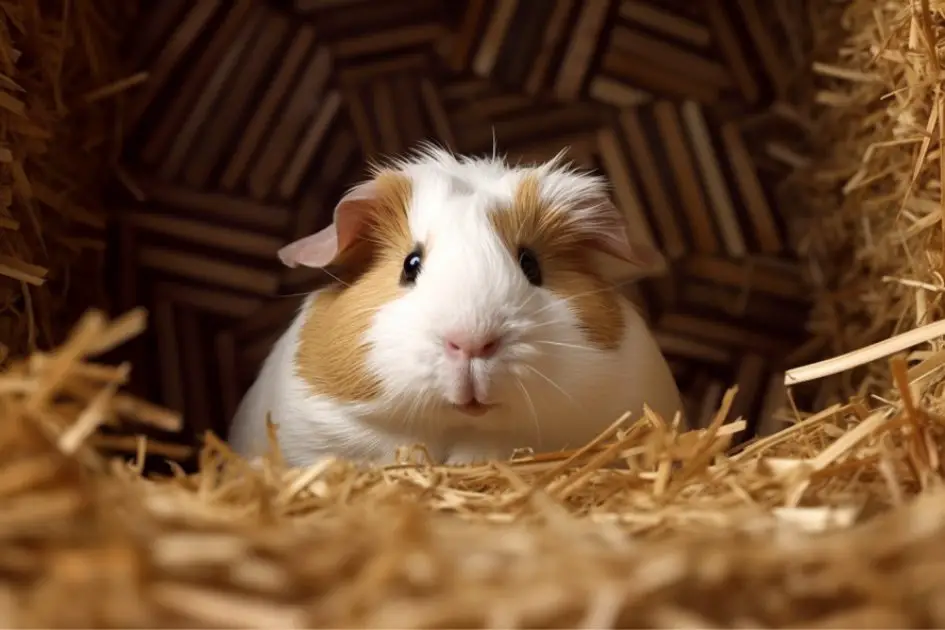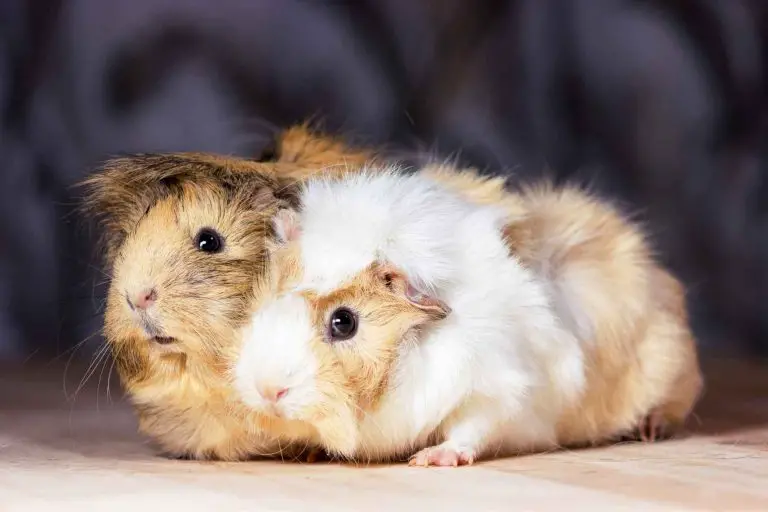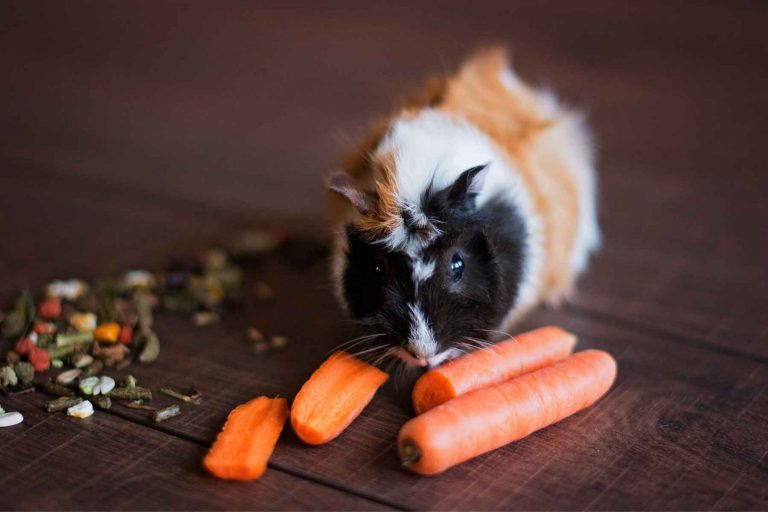How to Take Care of a Guinea Pig: Essential Tips and Guidelines

Guinea pigs are popular pets known for their friendly disposition and low-maintenance requirements. As small mammals, they make excellent companions for both children and adults alike. However, providing the best care for these lovable creatures requires a basic understanding of their needs and habits.
Proper care of a guinea pig involves maintaining a clean and suitable living environment, providing a healthy and balanced diet, and ensuring regular social interaction. In addition, it is essential to monitor their health through periodic check-ups and to be attentive to any signs of illness or discomfort. Like any pet, taking care of a guinea pig is a rewarding experience when the necessary commitments are undertaken.
By reading further, pet owners can gain valuable insight into the most successful methods and techniques for ensuring a happy, healthy life for their guinea pig. Knowledge in these areas will not only result in greater satisfaction for the owner, but will ultimately contribute to the overall well-being of these endearing pets.
Housing and Environment
Guinea pigs, also known as cavies, require a safe and comfortable environment to thrive. This section will cover housing and environmental factors such as cage size and materials, flooring and bedding options, and temperature and lighting considerations to provide the best living conditions for your pet.
Cage Size and Materials
Guinea pigs need adequate space to move around and explore. A minimum cage size of 7.5 square feet for one or two guinea pigs is recommended, with additional space for each additional guinea pig. A table to help choose the right size for your guinea pig’s cage:
| Number of Guinea Pigs | Minimum Cage Size |
| 1 | 7.5 square feet |
| 2 | 7.5 square feet |
| 3 | 10.5 square feet |
| 4 | 13 square feet |
| 5 | 16 square feet |
Materials used for guinea pig cages should be safe and non-toxic. Plastic or metal cages with wire lids are common, as they allow proper air circulation. A solid lid should be avoided, as it can cause a buildup of harmful ammonia fumes from urine.
Flooring and Bedding Options
A suitable flooring option for guinea pig cages is essential for their comfort and hygiene. Hard flooring, such as plastic or metal, should be covered with appropriate bedding to provide insulation and absorbency.
Some popular bedding options for guinea pigs include:
- Wood shavings (avoid cedar and pine, which can be harmful)
- Paper-based bedding
- Fleece (washed frequently to maintain cleanliness)
It is essential to clean and replace bedding regularly to maintain a healthy environment for your guinea pig.
Temperature and Lighting
Guinea pigs thrive in a stable environment with a temperature ranging between 65°F and 75°F. Proper ventilation and avoiding direct sunlight exposure on the cage are crucial to prevent overheating. The cage should also be located away from drafts, air conditioning vents, or direct heat sources, such as radiators or space heaters.
While it’s essential to provide natural light exposure for your guinea pig, a consistent light and dark cycle is necessary to establish a routine. If the cage is indoors, providing about 12 hours of light and 12 hours of darkness per day will help facilitate proper sleep patterns and overall wellbeing.
Feeding and Nutrition
Caring for your guinea pig involves providing a nutritious and varied diet to ensure their health and happiness. An ideal guinea pig diet consists of hay, pellets, fruits and vegetables, adequate water, and supplements when needed.
Hay
Hay is the staple food and the most critical component of a guinea pig’s diet. It provides essential fiber and aids in digestion. Guinea pigs should always have access to an unlimited supply of fresh hay.
Choose high-quality grasses like Timothy, Orchard, or Meadow hay to provide the necessary nutrients. Regularly replenish the hay to maintain its freshness and avoid mold or dampness.
Pellets
Guinea pig pellets contribute a source of essential vitamins, minerals, and protein. Feed your guinea pig approximately 1/8 cup of pellets daily, depending on their size and age. Opt for high-quality guinea pig pellets enriched with vitamin C.
Avoid pellets with added sugars or preservatives, and refrain from feeding them formulations intended for other animals such as rabbits or hamsters.
Fruits and Vegetables
Guinea pigs benefit from consuming varied and fresh fruits and vegetables. Leafy green vegetables, like kale, parsley, and cilantro, are excellent choices to add to their daily diet. Introduce new foods gradually to avoid upsetting their digestive system.
Feed them a small quantity of fresh fruits, such as apples and bell peppers, as treats. Fruits should form a minor part of their diet due to their high sugar content.
Water
Fresh water is vital for guinea pig health, and clean water should be available at all times. Utilize a water bottle designed specifically for guinea pigs to prevent contamination. Check and refill the water bottle daily, and thoroughly clean it to prevent the growth of bacteria and fungi.
Supplements
Guinea pigs cannot synthesize their own vitamin C, rendering it crucial to supply them with a sufficient amount of it through their diet. Fresh vegetables, fruits, and fortified pellets are good sources of vitamin C.
In some cases, guinea pigs may require additional vitamin C supplementation. Consult with a veterinarian before adding any dietary supplements to your guinea pig’s nutritional regimen.
Grooming and Maintenance
Proper grooming and maintenance are key factors in ensuring your guinea pig stays healthy and comfortable. This section will cover the essential aspects, such as hair care, nail trimming, teeth care, and bathing.
Hair Care
Guinea pigs have varying hair types, from short and smooth to long and silky. Regular brushing is necessary to prevent tangles, especially for long-haired breeds. Wire-haired guinea pigs may also benefit from gentle grooming to keep their fur neat. To avoid potential injuries, use a soft-bristle brush or comb and always brush in the direction of hair growth.
- Short-haired guinea pigs: Brush once a week
- Long-haired guinea pigs: Brush daily
Nail Trimming
Regular nail trimming is essential for guinea pigs, as overgrown nails cause discomfort and can lead to health issues. Ideally, nails should be trimmed every three to four weeks. Use small animal nail clippers and clip only the tip of the nail, avoiding the quick (the pink area within the nail). If the quick is accidentally cut, use styptic powder or cornstarch to stop the bleeding.
Teeth Care
Guinea pigs have continuously growing teeth, requiring adequate care to prevent overgrowth. Provide your guinea pig with high-quality hay, as the natural chewing action helps wear down their teeth. You can also offer hard wooden chew toys, which encourage teeth grinding. Examine your guinea pig’s teeth regularly, and if you notice any abnormalities, seek advice from a vet promptly.
Bathing
Guinea pigs generally do not require frequent baths, as excessive bathing can strip their skin of natural oils, leading to dryness and irritation. However, if your guinea pig becomes dirty or sticky, a bath may be necessary. Use a small, shallow container filled with lukewarm water and a guinea pig-safe shampoo. Gently clean your guinea pig, avoiding contact with the eyes and ears, and then towel-dry or use a hairdryer on a low setting to dry them off.
Exercise and Social Interaction
Guinea pigs are active and social animals that require both physical exercise and social interaction to maintain their overall health and happiness. This section will focus on ways to provide your guinea pig with the necessary exercise and interaction they need, and will cover relevant topics such as toys, playtime, companionship, and handling.
Toys and Accessories
Providing your guinea pig with a variety of toys and accessories can help keep their minds stimulated, and encourage physical activity. Some popular options include:
- Tunnels: Guinea pigs enjoy exploring and running through tunnels, which can be made of plastic or fabric.
- Chew toys: Chewing helps guinea pigs maintain their dental health, so provide a variety of chewable toys such as wooden blocks or grassy mats.
- Hiding spots: Guinea pigs enjoy having a safe space to hide and relax, so consider providing them with small boxes or hidey-huts.
Playtime and Floor Time
Guinea pigs need regular opportunities to explore and exercise outside of their cage. Schedule a daily playtime and provide a safe, guinea pig-proofed area for your pet to roam and interact with their surroundings. During this time, you can also introduce fun activities like:
- Setting up obstacle courses using their toys and accessories.
- Providing a shallow tray of sand or soil for digging.
Remember to always supervise your guinea pig during floor time to ensure their safety.
Guinea Pig Companionship
As herd animals, guinea pigs crave social interaction and fare best when in the company of other guinea pigs. If possible, consider having at least two guinea pigs of the same sex to allow for companionship and mutual grooming. Keep in mind that each pig has their own personality, so always carefully observe their interactions and separate them if any signs of aggression occur.
Handling and Bonding
Regular handling can help you build a strong bond with your guinea pig and improve their comfort level around humans. Always handle your guinea pig gently and calmly, taking care to support their entire body as you lift them. Keep communication consistent by using soft vocalizations and offering healthy treats as rewards. With patience and consistency, your guinea pig will come to associate positive experiences with handling, strengthening your relationship.

Health and Care
Proper care and attention are crucial in ensuring the health and well-being of your guinea pig. This section will cover some common illnesses, signs to watch out for, and finding a suitable veterinarian for your pet.
Common Illnesses and Prevention
Guinea pigs, like all pets, can be susceptible to various illnesses. Listed below are some of the most common issues and preventive measures:
- Overgrown teeth: Provide ample hay, such as alfalfa hay for young guinea pigs and grass hay for adult guinea pigs, as the grinding action helps keep teeth in check.
- Balance issues: Ensure your guinea pig’s cage has a solid, safe, and flat floor to promote proper balance.
- Allergies and respiratory issues: Avoid using cedar chips or heavily scented bedding, as these can cause respiratory problems.
Feeding your guinea pig fresh vegetables such as carrot tops, spinach, and cauliflower on a regular basis can boost their immune system and overall health. However, introducing new food items gradually helps prevent digestive issues.
Signs to Watch Out For
Early detection and treatment of illnesses are essential in maintaining your guinea pig’s health. Here are some signs that may indicate the need for veterinary attention:
- Lethargy or lack of energy
- Loss of appetite or weight loss
- Rough or unkempt coat
- Labored breathing or persistent sneezing
- Discharge from the eyes, nose, or mouth
It’s essential to keep a close eye on your guinea pig’s behavior and appearance, noting any changes that may signal health issues.
Finding a Veterinarian
Locating a knowledgeable and experienced veterinarian is a critical aspect of guinea pig care. Regular checkups can help detect and treat any health issues early on, ensuring your pet remains in good health. When searching for a veterinarian, consider the following factors:
- Experience with guinea pigs and other small animals
- Proximity to your home for ease of access
- Availability of emergency services
- Cost and affordability
Researching and comparing different veterinarians beforehand will ensure you find the best possible care for your guinea pig.
Guinea Pig Breeds and Adoption
This section will discuss popular breeds of guinea pigs, how to choose the right one for you, and provide tips on adoption and purchasing.
Popular Breeds
There are several breeds of guinea pigs, each with its distinct traits and characteristics. Some of the most popular breeds include:
- American: This is the most common breed, known for its smooth, short coat and pleasant temperament.
- Peruvian: Peruvian guinea pigs boast long, flowing hair that requires regular grooming and maintenance.
- Texel: These guinea pigs have a curly, soft coat that gives them a unique, plush appearance.
- Abysinnian: Characterized by their short, wiry hair with pronounced swirls, called rosettes, this breed is known for its energetic personality.
Choosing the Right Guinea Pig
When selecting a guinea pig, it’s essential to consider your lifestyle and preferences. Guinea pigs can live for 5-7 years, so it’s a long-term commitment. Key factors to consider include:
- Companionship: Guinea pigs are social animals and thrive in the company of other guinea pigs. You may want to adopt at least two for their well-being.
- Grooming: Long-haired breeds require regular grooming, while short-haired breeds need less maintenance. Assess your availability for grooming tasks before selecting a breed.
- Temperament: Although all guinea pigs have unique personalities, some breeds are generally calmer or more energetic. Choose one based on your desired level of interaction and activity.
Adoption and Purchasing Tips
When looking to welcome a guinea pig to your home, consider these tips for a responsible and informed adoption process:
- Adopt, don’t shop: Many guinea pigs await adoption in shelters and rescues. Adopting from these sources helps save lives and make room for other animals in need.
- Research breeders: If you choose to purchase from a breeder, ensure they are reputable and ethical. Responsible breeders prioritize the health and well-being of their animals over profit.
- Prepare in advance: Have your guinea pig’s cage, food, toys, and other necessities ready before bringing them home.
- Avoid impulse decisions: Remember that guinea pigs require daily care and have specific needs. Ensure you are ready for the commitment before making a decision.
Conclusion
Caring for a guinea pig involves providing a clean and comfortable living environment, a healthy and balanced diet, and regular social interaction. It is essential to monitor their health and to be attentive to any signs of illness or discomfort.
With the necessary commitments and understanding of their needs, caring for a guinea pig can be a rewarding experience for pet owners, ultimately contributing to the overall health and happiness of these endearing pets.






